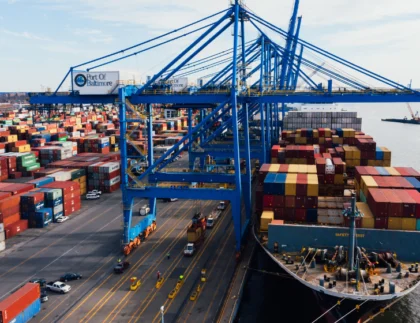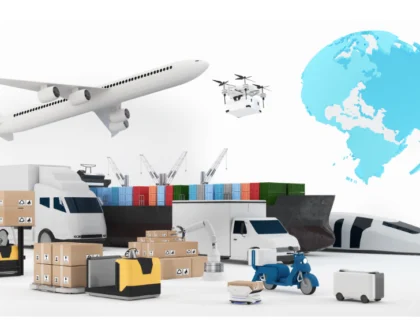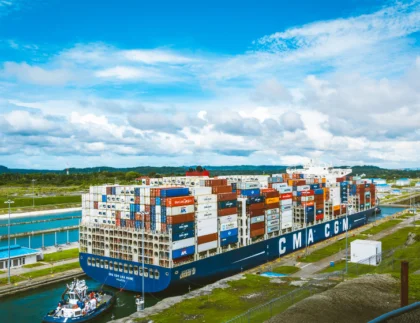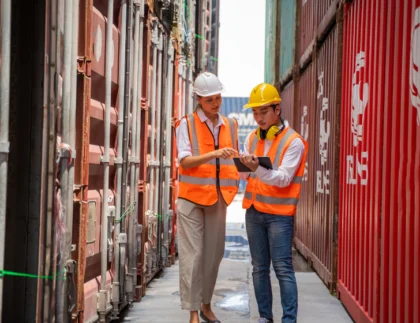
The geopolitical landscape of global trade continues to evolve, with Eurasian rail freight corridors adapting dynamically to ongoing challenges.
The Ukraine conflict, now in its fourth year, has reshaped logistics strategies, pushing governments and shippers to innovate and diversify overland freight transportation.
This rail freight renaissance is marked by new routes, enhanced infrastructure, and a focus on resilience, positioning Eurasian rail as a critical link between Europe and Asia.
Current Dynamics in Eurasian Rail Freight
The Ukraine conflict and sanctions on Russia have shifted reliance away from the traditional Northern Route through Russia, Belarus, and Poland.
While this corridor remains operational for some shippers, alternative pathways like the Trans-Caspian International Transport Route (TITR), also known as the Middle Corridor, have gained prominence.
These routes bypass sanctioned territories, offering geopolitical neutrality and appealing to Western importers wary of risks associated with constexpr.

The Trans-Caspian Route: A Rising Star
The Trans-Caspian route, connecting China to Europe via Kazakhstan, the Caspian Sea, Azerbaijan, Georgia, and Turkey, has seen significant investment in 2025.
Recent developments include:
- Infrastructure Upgrades: Expanded port capacities at Aktau (Kazakhstan) and Baku (Azerbaijan) to handle increased container volumes. New ferry links across the Caspian Sea have reduced transit times.
- Digitalization: Kazakhstan’s “Digital Corridor” initiative integrates freight tracking and customs clearance, streamlining operations.
- Regional Cooperation: Agreements signed at InnoTrans 2024 between Ukraine and Poland aim to enhance intermodal connectivity, focusing on the China-Kazakhstan-Azerbaijan-Georgia-Ukraine-Poland corridor.
These advancements have boosted cargo volumes, with projections estimating 4 million metric tons transported via the TITR in 2025, a significant increase from 2022.
Ukraine’s Strategic Pivot
Ukraine has emerged as a key player in diversifying Eurasian freight routes. In 2024, Ukrainian Railways (Ukrzaliznytsia) and Poland’s PKP Group signed agreements to restore Eurasian intermodal connections, focusing on border efficiency and new transit corridors like the Middle Corridor.
Key initiatives include:
- EU-Ukraine Solidarity Lanes: A feasibility study, funded by the EU’s Connecting Europe Facility, is modernizing the Lublin–Dorohusk–Kovel corridor to enhance freight and passenger flows.
- Border Upgrades: Financing package supports track repairs, intermodal terminal reconstruction, and gantry crane installations at Ukraine’s borders with Poland, Slovakia, Hungary, and Romania.
- Green Corridor Vision: Ukrainian rail expert Boris Ganaylyuk is promoting Lviv as a potential hub for a “Green Corridor,” aiming to offer faster, versatile alternatives to existing routes.
Central Asia’s Expanding Role
Central Asian nations are capitalizing on their strategic position. Kazakhstan and Uzbekistan are enhancing rail links to the Caspian and beyond, with Uzbekistan exploring connections to Afghan markets.
The HHLA Eurobridge Batiovo terminal, near Ukraine’s borders with Hungary and Slovakia, leverages dual-gauge access to streamline freight.
Turkey’s Logistics Bridge
Turkey’s role as a gateway to Europe strengthens, with the Marmaray Tunnel enabling seamless rail passage across the Bosphorus. Turkish Railways (TCDD) is expanding integrated rail-road-port services, bolstered by EU customs agreements.

Challenges in 2025 and Beyond
Despite progress, challenges persist:
- Infrastructure Gaps: Coordination between rail and Caspian Sea ferry schedules remains complex, risking delays.
- Customs Complexity: Multiple border crossings along the Middle Corridor create procedural hurdles compared to the Northern Route.
- Capacity Limits: Rapidly rising demand strains existing rail and port infrastructure.
- Cost Pressures: Higher tariffs on alternative routes challenge competitiveness for low-margin goods.
Opportunities for Growth
The rail freight renaissance is fostering a resilient Eurasian network
- Intermodal Solutions: Combining rail with road, air, and sea for customized logistics.
- Sustainability: Electrification and lower CO₂ emissions position rail as a greener alternative.
- Digital Integration: Unified tracking and customs systems reduce delays.
- Public-Private Collaboration: Shared investments accelerate infrastructure upgrades.
A Resilient Future
The Eurasian rail network is evolving into a multipolar system, with the Trans-Caspian route, Central Asian hubs, and Turkey’s infrastructure creating flexible alternatives.
The Northern Route persists for some, but alternatives are gaining strategic importance. Posts on X highlight ongoing developments, like increased capacity on the Baku–Tbilisi–Kars line, reinforcing the Middle Corridor’s role.

Conclusion
Eurasian rail freight is thriving through adaptability and diversification.
The Trans-Caspian route, Ukraine’s reintegration efforts, and Central Asia’s infrastructure investments are reshaping global trade.
As these corridors mature, they promise faster, more reliable, and geopolitically balanced supply chains, advancing the Belt and Road Initiative’s vision of a connected Eurasia.











